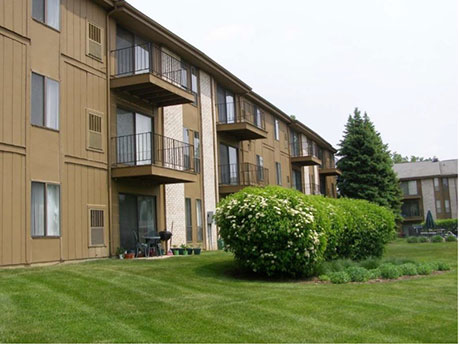By Adam Ferguson, Bernard Financial Group
If 2022 was a lesson in how rapidly things can change in commercial real estate, 2023 was an exercise in adaptation for both borrowers and lenders alike. Detroit is no stranger to change or adaptation.
From becoming the Motor City and growing into the country’s fourth-largest city during the first half of the 20th century to a renaissance in the 2010s after several decades of bumps and bruises, Detroit continues to add to its storied history. With billions of dollars of investment within the city limits and growing suburban sectors, Detroit’s multifamily market is making significant advancements by adding fresh developments to a market where 38 percent of multifamily inventory is over 50 years old.

While certainly not the only catalyst, low interest rates help to spur development. Lower cost of capital is especially impactful in markets like Detroit where building costs are high and rents are low compared with other major markets. Southeast Michigan averaged over 3,800 units of multifamily housing building permits issued per year over the past decade. Compare that to an average of 988 from the decade prior and one can discern the growth in demand for multifamily housing financing sources.
During the 2010s, steady growth was the resounding theme, with multifamily housing demand largely fueled by recession fallout and young professionals demanding more live/work/play communities. Renter-occupied inventory grew 14.8 percent from 2010 to 2020, compared with 5.4 percent growth in owner-occupied inventory during that same period nationally. This gap is more dramatic in several of the top growth MSAs across the country. One of the outcomes of this trend is the massive amount of debt issuance at low interest rates that, in most cases, will eventually need to be refinanced.
Multifamily mortgage debt outstanding rose from $852 billion in 2010 to over $2 trillion today across the GSEs, CMBS, banks, life insurance companies, debt funds and other institutions. Many of these loans were long-term, fixed-rate products that supplied both high-leverage and healthy cash flows, especially in Midwest markets like Detroit where cap rates were still generally conservative compared with the coasts. There was also a significant amount of short-term, floating-rate debt issued from debt funds and banks to facilitate the acquisition, repositioning or construction of multifamily developments.
As both the federal funds rate and U.S. Treasury yield rocketed up from years of historic lows, commercial real estate developers and investors were faced with a form of grief — what worked for so long was suddenly gone. Properties with floating-rate loans were strained with substantial increases in debt service obligations. Interest rate caps became exponentially more expensive. Banking turmoil, both generally and specifically related to any one institution’s exposure to loans without clear exits, was also a major issue.
Today, multifamily investors face a mixed bag of market factors characterized not only by rising interest rates, but also the ongoing unmet demand for housing. Developers have successfully delivered ground-up or repositioned properties that meet or, in many cases, exceed performance expectations compared with their original proforma. In calmer markets with flat interest rates, this would be a home run.
Currently these achievements, however, are often coupled with an impending loan maturity that necessitates a capital infusion just to refinance the original loan. Few developers or lenders contemplated a permanent loan rate of 6 or 7 percent in their takeout analysis. Debt must now be right-sized to secure either new financing or an extension on the current debt to meet minimum lender underwriting metrics, including debt service coverage ratios and leverage constraints. For example, a $50 million loan at 3.5 percent becomes a $38 million loan at 6 percent, when constrained by a 1.25x debt service coverage ratio.
Not all maturing debt will require fresh equity, and there remains plenty of singles, doubles and triples hit over the past several years in the Detroit multifamily market. Steady rent growth in a shifting landscape has helped to mitigate rising costs for operators of multifamily properties, but the average renter also has affordability concerns that must be addressed. With an increasing delta between the costs of renting versus buying, consumers have either delayed or changed their decision to enter the home buying market.
Construction is underway on 5,400 multifamily units in the market, well above the 10-year average. Even amid a credit crunch, financing sources and investor appetite remain strong for multifamily. It is not only the availability of financing that is important, but also critical is the potential impact of that choice three, four or five years down the road. There are trade-offs to be evaluated when comparing any lending source or financing style. Certainty of execution, fixed rate versus floating rate, leverage, interest rate and countless other factors are all considerations for every project, whether ground-up development or refinancing an existing loan.
Markets shift and asset classes evolve. Consumer sentiment and behavior will continue to shape the terrain, but the need for housing will remain through time. The capital stack may look different, but there will be heavy competition from both investors and financing sources for quality multifamily properties. The City of Detroit and surrounding suburbs will continue to offer opportunities to those willing to commit.
Adam Ferguson is a principal with Bernard Financial Group. This article originally appeared in the February 2024 issue of Heartland Real Estate Business magazine.


